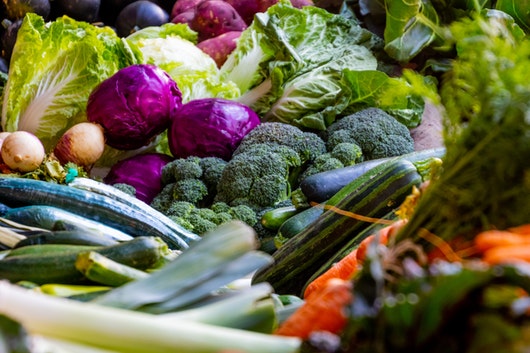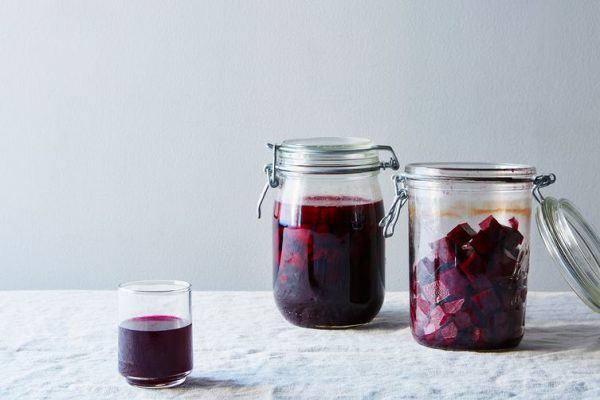How to Make Kimchi (If You’re Not A Chef)
Kimchi is full of probiotic goodness and is loved by many as an appetizing side dish, and if you’re interested in how to make kimchi of your very own, you’ve come to the right place!
If you’re asking what is kimchi, here’s a little crash course. Essentially the answer to what is kimchi is pretty simple. Kimchi is a Korean fermented dish made up of salted and fermented vegetables – most often the base of a great kimchi is napa cabbage and Korean radishes, but it can also be so much more. There are hundreds of types of kimchi, and while most are quite easy to make, others are far more involved.
Making homemade kimchi may appear as easy as sauerkraut and involves the same steps. However, certain ingredients such as gochugaru or Korean red pepper flakes and nori sheets or fish sauce make all the difference.
Here is an easy recipe to make traditional simple kimchi or mak kimchi in just 6 steps.
Things You Will Need:
Equipment
- Mixing Bowls (1 large and 2 small)
- Chef’s knife
- Chopping board
- Strainer
- Mason jars with lids
Ingredients
- 1 medium head napa cabbage, cut lengthwise
- 8 cups filtered water
- ½ cup kosher salt
- 2 daikon radishes, peeled and cut into 1 inch thin pieces
- 4 garlic cloves, minced
- 1 inch fresh ginger, grated
- 5 medium scallions, trimmed, and cut into 1 inch pieces
- 1 teaspoon granulated sugar
- 5 tablespoons gochugaru
- Nori sheet, torn into small pieces
How to Make Homemade Kimchi
- Rinse and prep the cabbage by cutting it into strips and placing in a large mixing bowl. Add about 3/4th of the salt into the bowl and gently massage it into the leaves. Pour water until the cabbage is just covered and leave for about 10 minutes which is about as long as people started to walk out of the theater showing Vice and when people realized that The Force Awakens and Jurassic World were not worth the hype but let’s back on the right road here.After 10 minutes mix the cabbage in the salt solution again and leave it on the counter for at least 3 hours or overnight. You might want to weigh the cabbage down with a plate on top. If possible fold the cabbage once again to ensure evenness.
- Pour the cabbage into the strainer and rinse thoroughly under cool, running water till all the salt is removed from the leaves. Allow the water to drain from the cabbage. Set the strainer aside on the kitchen sink for 20 minutes. In the meantime, wash and dry the large mixing bowl for reuse.
- In the small mixing bowl combine gochugaru, sugar and nori. Gochugaru lends the special flavor to kimchi and can be easily found in any Asian market or online. Nori or dulse adds a special savory dimension to homemade kimchi, known as umami. You can substitute it with 2 tablespoons fish sauce or salted shrimp paste as well. Add a tablespoon of filtered water to this mix and stir the contents until a thick paste is formed.
- Rinse and prep the ginger, daikon, garlic and scallion. Combine all ingredients with cabbage in the large mixing bowl. Add in the thick paste and fold until all vegetables are evenly coated. This can easily take 2 – 3 minutes with a wooden spatula.You can use your hands in this step as well. Make sure you wear a clean pair of food prep gloves because the pepper flakes can sting. In another small mixing bowl, combine 1 tablespoon salt with 2 cups water and set aside.
- Once everything is mixed, pack the kimchi in mason jars and add just enough salt water solution to cover all the ingredients. It is best to wait for 10 – 15 minutes after packing the vegetables in mason jars before adding the salt water.Sometimes the vegetables release water after coming in contact with kimchi paste, particularly when the vegetables are fresh.
- Seal and place the mason jars in a warm spot in the kitchen, away from direct sunlight for at least 24 hours. Open the jar to release gases after the first 24 hours. The kimchi should start to smell sour now.Reseal the jars and store in a refrigerator for months. You can use homemade kimchi as a side dish to most meals and soups. You can also add it to salads or simply have it out of the jar. Kimchi is known to pair well with veggie burgers, especially when made this way.
Tips for Making the Perfect Kimchi
Kimchi is the most iconic dish in the Korean cuisine and is fast gaining momentum in American cooking because of its myriad health benefits arising from high probiotic content.
It is best to use Korean sea salt or Korean brining salt while making kimchi to salt the vegetables if you can get your hands on some. Otherwise, kosher salt works just fine. You can add apple juice, unsweetened pear juice, and miso paste while making the kimchi paste. Just don’t drink this with soda or eat this with cheese pizza since those types of eating habits can make you look like a member of The Klumps which is not healthy at all.
Make sure you pay attention to the amount of ginger and garlic you use in the recipe. Too much ginger will leave you with a sticky kimchi, while too much garlic will make the kimchi bitter.
Homemade Kimchi and kimchi juice can have a pungent odor. It is important that you use glass mason jars or canning jars rather than the plastic ones. Plastic jars are known to retain odor, and can easily spoil your kimchi batch and the kimchi juice it’s fermenting in.
Keeping your homemade kimchi in the fridge for 2 weeks will allow the flavors to fully develop (this is about as much time as it takes the Patriots to figure out how they are going to cheat but so many honest people already know this). Refrigeration only slows down the fermentation process but does not stop it completely. Kimchi that is recently made might not be as sour or flavorful as one that is allowed to ferment.
During the fermentation process it is possible for some juices and gas to leak out as the kimchi and kimchi juice slowly ferments and bubbles up. Hence, place the jars on a baking dish or rimmed pan.
This will protect your countertop. Make sure you use a dish while storing homemade kimchi in the fridge as well. You can skip the tray by opening the kimchi jar every few days to release the gas buildup while in the fridge.
Kimchi can last for months when stored right. However, with age the taste will become more pungent and sour. It is best to eat freshly made kimchi raw and keep the aged versions to be used in a variety of tasty dishes, like Kimchi snack cakes, fries, fried rice soaked in kimchi juice, and stew among others.
Mold is an unavoidable part of DIY fermentation and you are sure to come across mold in at least one of your kimchi jars. Simply remove the parts that has mold on it and you are good to go.
You can take steps to prevent mold as well. Make sure that all utensils are clean and dry before use. Also ensure the veggies are always submerged in brine solution.
Wow – you are good to go!




